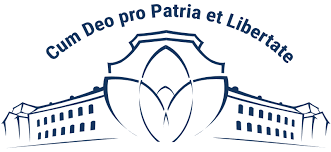LANDSCAPE-GEOCHEMICAL DEGRADATION IN AREAS OF INTENSIVE CONSTRUCTION
DOI:
https://doi.org/10.32782/2786-5843/2025-3-3Keywords:
landscape, geochemistry, anthropogenic impact, inert components, biotic components, reclamation, OSM, NDVIAbstract
Research relevance: The study is driven by the intensive technogenic impact of construction activities on landscape-geochemical processes, leading to the disruption of the functional integrity of natural landscape components. Understanding the nature and scale of landscape-geochemical transformations in intensive construction zones is essential for developing scientifically grounded methodologies for environmental monitoring and restoration of disturbed natural ecosystems. The subject of the research: landscape-geochemical changes in the inert and biotic components of intensive construction areas, particularly transformations in soil chemical composition, acid-base balance, and the spatial structure of ecosystems. Special attention is paid to the interaction between geological, soil, and biotic elements of the landscape under technogenic pressure. Research objective: to determine the nature and extent of landscape-geochemical transformations in intensive construction zones of Kyiv and to assess disruptions in the interaction between inert and biotic components of the landscape. Object of the research: areas of intensive construction within the city of Kyiv, undergoing transformations due to construction-related impacts.Research methodology: bioindication, soil chemical analysis, and spatial modeling in GIS, applying statistical methods such as spatial autocorrelation (Moran’s I), cluster analysis, and multivariate regression modeling.Research results: Concentrations of lead (Pb), copper (Cu), and zinc (Zn) in the soils of construction sites exceed permissible safety limits. The pollution index (Zc) within a 300-meter radius from the sources exceeds 12, indicating a high level of technogenic impact. Spatial analysis using autocorrelation and cluster analysis revealed patterns in the distribution of anthropogenic pressure zones. Practical significance: The obtained results are essential for considering landscape-geochemical transformations in spatial development planning, implementing ecological zoning, land reclamation, and the creation of buffer zones to ensure the functional integrity of ecosystems under intensive construction conditions. This confirms significant transformations of natural components in construction zones, manifested in elevated levels of technogenic pollution and degradation of vegetative cover. Conclusions: Landscape-geochemical studies recorded concentrations of heavy metals in construction zone soils that exceed maximum permissible levels. Spatial analysis revealed statistically significant clusters of technogenic impact within 300 meters of construction sites. During the study period, the NDVI index decreased by 31%, indicating degradation of the living components of the landscape. Results of autocorrelation and cluster analysis confirmed the spatial heterogeneity of pollution distribution and ecological risk zones. Prospects for further research: It is relevant to conduct a comprehensive landscape-geochemical monitoring study across the entire Kyiv agglomeration to identify spatial patterns of structural and functional landscape integrity disruption caused by construction activities, using NDVI (Normalized Difference Vegetation Index), soil pollution index (Zc), spatial autocorrelation metrics, and multivariate analytical methods.
References
Денисик Г.І. Антропогенне ландшафтознавство – основа майбутнього ландшафтознавства України. Розвиток антропогенного ландшафтознавства у ХХІ сторіччі : матеріали всеукр. наук.- практ. інтернет-конф. Вінниця, 2021. № 35. С. 3–7.
Сонько С.П., Зеленчук І.Д., Новікова Т.П. Промислове будівництво, як чинник деструкції природних ландшафтів і втрати потенціалу екосистемних послуг. Людина та довкілля. Проблеми неоекології. 2025. Вип. 43. С. 63–77. DOI: https://doi.org/10.26565/1992-4224-2025-43-05.
Splodytel A. Рatterns of spreading of heavy metals in soils of urbanized landscapes (on the example of Brovary city). Journal of Geology, Geography and Geoecology, 29(3), 2020. 580–590. DOI: https://doi.org/https://doi.org/10.15421/112053.
Сонько С.П., Зеленчук І.Д. Вплив будівництва на ландшафти лісостепової зони України. Людина та довкілля. Проблеми неоекології. 2024. Вип. 42. С. 24–34. DOI: https://doi.org/10.26565/1992-4224-2024-42-02.
Denysyk H., Kanskyi V., Kanska V., Denysyk B. (2022). Anthropogenic landscapes of Ukraine and their reconstruction. Czasopismo Geograficzne, 93(3): 417–433. DOI: https://doi.org/10.12657/czageo-93-16.
Малишева Л.Л. Геохімія ландшафтів : навч. посіб. для студ. геогр. спец, вищих закл. Освіти. Київ : Либідь, 2000. 472 с.
Splodytel A.O. Landscape and geochemical assessment of ecological condition of environmental protection territories. Visnyk of V. N. Karazin Kharkiv National University. Series Geology. Geography. Ecology, (51), 2020. 234–242. DOI: https://doi.org/10.26565/2410-7360-2019-51-17.
Денисик Г.І., Кізюн А.Г., Канський В.С. Белігеративні ландшафти України. Український географічний журнал. 2023. № 3. С. 23–34. DOI: https://doi.org/10.15407/ugz2023.03.023.
П’яткова А.В. Ландшафтознавство: прикладні аспекти : навч.-метод. посіб. Одеса : ОНУ імені І.І. Мечникова, 2020. 122 с.
Сонько С.П., Зеленчук І.Д. Використання новітніх технологій у будівництві для зменшення шкідливого впливу на інертні компоненти ландшафту. Проблеми безперервної географічної освіти і картографії. 2022. № 35. С. 32–38. DOI: https://doi.org/10.26565/2075-1893-2022-35-04.
Зеленчук І.Д. Потенціал 3D-друкованого будівництва у післявоєнній відбудові України: оцінка впливу на ландшафтні компоненти. SWorldJournal. 2024. № 27(2). P. 50–61. DOI: https://doi.org/10.30888/2663-5712.2024-27-00-014.
Генеральний план міста Києва – КО «Інститут Генерального плану міста Києва». Проект. Київ, 2011. URL: https://ips.ligazakon.net/document/NT0205 (дата звернення: 14.07.2025).
Іванов Є.А., Ковальчук І.П. Деструкція гірничопромислових ландшафтів. Journal of Education, Health and Sport. 2016. Vol. 6. № 5. P. 369–392. DOI: http://dx.doi.org/10.5281/zenodo.53161.
Сонько С., Зеленчук І. Відновлення природних ландшафтів з подальшим формуванням екосистем на прикладі будівництва рекреаційних зон у Києві: ландшафтний аналіз. SWorld-Us Conference : proc. сonf. Sweden : SSPG Publish, 2024. P. 59–65. DOI: https://doi.org/10.30888/2709-2267.2024-27-00-003.
Корнієнко О.М. Деструкція. Енциклопедія Сучасної України / Редкол. : І.М. Дзюба, А.І. Жуковський, М.Г. Железняк та ін. ; НАН України, НТШ. Київ : Інститут енциклопедичних досліджень НАН України, 2007. URL: https://esu.com.ua/article-2632
Seperteladze Z., Davitaia E., Aleksidze T., Rukhadze N. Anthropogenic transformation of landscapes and ecological risk factor assessment. Georgian Geographical Journal. 2024. Vol. 4, № 2. Р. 48–53. DOI: https://doi.org/10.52340/ggj.2024.04.02.06.
Jaafar W., Xu J., Farrar E. et al. Challenges and opportunities of low-cost sensors in capturing the impacts of construction activities on neighborhood air quality. Building and Environment. 2024. Vol. 254. Article 111363. DOI: https://doi.org/10.1016/j.buildenv.2024.111363.
Chen L., Zhang H., Xie Z. et al. The temporal response of dissolved heavy metals to landscape indices in the Le’an river, China. Environmental Research. 2022. Vol. 210. Article 112941. DOI: https://doi.org/10.1016/j.envres.2022.112941.
Kaja N., Goyal S. Impact of construction activities on environment. International Journal of Engineering Technologies and Management Research. 2023. Vol. 10. № 1. P. 17–24. DOI: https://doi.org/10.29121/ijetmr.v10.i1.2023.1277.
Li C., Zhang J., Philbin S. P. et al. Evaluating the impact of highway construction projects on landscape ecological risks in high altitude plateaus. Scientific Reports. 2022. Vol. 12. Article 5170. DOI: https://doi.org/10.1038/s41598-022-08788-8.
Yu H., Kong B., He Z. W. et al. The potential of integrating landscape, geochemical and economical indices to analyze watershed ecological environment. Journal of Hydrology. 2020. Vol. 583. Article 124298. DOI: https://doi.org/10.1016/j.jhydrol.2019.124298.
Сержантова Ю.Ю., Марченко О.І., Зеленчук І.Д. Використання новітніх технологій для моніторингу та збереження довкілля: роль дронів, супутників та штучного інтелекту. Екологічні науки. 2024. № 5(56). С. 182–188. DOI: https://doi.org/10.32846/2306-9716/2024.eco.5-56.27.
Copernic͏us Land Monitoring Service. URL: https://land.copernicus.eu/en
GISFile. Публічна карта. URL: https://gisfile.com/map







